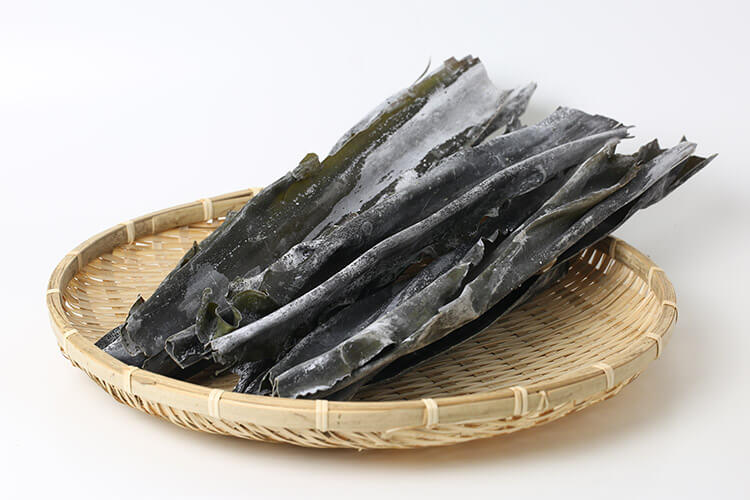
You can make delicious Japanese soup stock in an instant with this soup stock powder. Uses of Kombu powder.

While the white powdery substance on dried kombu laminaria ochroleuca is predominantly made up of sodium based minerals the coating on sugar kobmu has a greater quantity of the sugary substance mannitol which lends its distinctive sweetness.
White powder on kombu. What is that white powder on the surface of kombu. Dried kombu may be covered in a fine white powder. Though occasionally mistaken for glutamate this powder is in fact a type of mildly sweet sugar known as mannitol another taste element of kombu.
Kombu dashi separates itself from the other kinds of dashi by serving as a vegetarian stock. It is also fairly easy to make as dictated by the recipe below. 20 grams of kombu 4 cups of water.
Using a damp cloth gently clean the kombu without removing the white powdery. Kombu is sometimes dyed so colour isnt necessarily a reliable indicator of type. Kombu is often covered in a chalky white film as shown in the photos on this page.
Dont be put off by this as its not a sign of spoilage. The powder is full of the naturally occurring glutamates that give kombu and dashi its savoury umami taste. SHIMAYA Kombu Dashi Powder is made from premium quality kelp seaweed kombu from Hokkaido Japans north Island.
You can make delicious Japanese soup stock in an instant with this soup stock powder. Japanese soup stock is the basis of many Japanese dishes. Uses of Kombu powder.
Kombu is usually found in strips squares or circles pieces known as Kiri. Kombu powder is used to make soups like miso noodles soup tofu soup and more. Here we will list the way to use kombu powder.
Kombu Powder on Amazon. Kombu powder is used for making Asian soups like noodle soup miso soup and. Kombu is the Japanese word for kelp most typically the Saccharina japonica species.
In Korean cooking kelp is called dasima and is an essential ingredient for making broth Kelps powerful umami flavor is perhaps most prominent and certainly most ubiquitous in the savory broth called dashi the foundation for Japanese cuisine. Kombu is the main ingredient to make dashi the soup broth extensively used in Japanese cooking. Rehydrated kombu can also be eaten as snacks or side dishes with a sprinkle of sesame seeds.
If you leave the white powder on the health benefits of kombu dried kelp are still the same as with fresh kelp. Sugar Kelp Laminaria saccharina 40 Gram Pack Sugar kelp has similar qualities to normal kombu. While the white powdery substance on dried kombu laminaria ochroleuca is predominantly made up of sodium based minerals the coating on sugar kobmu has a greater quantity of the sugary substance mannitol which lends its distinctive sweetness.
Sugar kelp is found in the extreme lower shore and in. Wipe the surface of the kombu seaweed with a kitchen towel or paper towel to remove dirt. DO NOT remove the white powder on the kombu.
In a stock pot add the water and the kombu together. Let it steep for 30 minutes. Place the stock pot over medium heat and bring it to a boil.
Remove the kombu immediately. Ume kombucha Japanese seaweed tea powder with plum makes excellent tea and seasoning for cooking a variety of dishes. Many people are surprised to know that seaweed can be the basic flavor of a simple tea infusion called kombu cha.
Kombu Cha which can be literally translated to kombu kelp tea is as that translation implies a tea made from the kombu seaweed. Wipe away any dirt from the kombu with a paper towel being careful not to rub off the white powdery deposits on the seaweed. Place the kombu and water in a saucepan and allow it to soak for 30 minutes to become soft.
Remove the kombu from the water and cut several lengthwise slits into the leaf.